140 Search Results for iep
April 9, 2013
by Robin Parker -
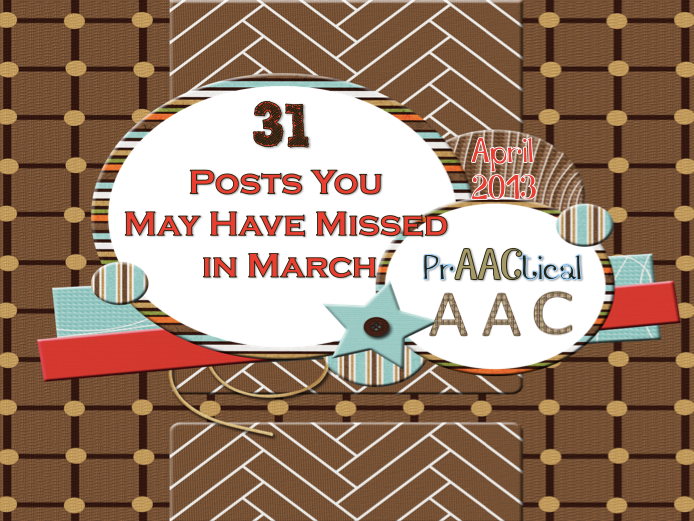
Strategy of The Month Narrative Skills for People with AAC Needs PrAACtical AAC & Personal Narratives Narrative Assessment & People Who Use AAC Let Me Tell You Something: Narratives for the Beginning Communicator Helping People with AAC Needs Develop Personal Narratives PrAACtical Thinking PrAACtical Guessing: 5 APPs for Interactive Inferencing Another Look at Vocabulary Instruction in AAC Magic Moments in Building Vocabulary with ‘Its Cool to be Clever’ It’s PrAACtically Saint Patrick’s Day 28 Posts You May Have Missed in February 10 AAC Things To Do for PrAACtically Free in 10 Minutes of Less Daylight Savings Time & PrAACtical Behavior Another Look At Language Facilitation Strategies to Make AAC Learning Effective Literacy, AT, & Students with Significant Disabilities Watch This: Planning with Strategies Worth Repeating: Big Ideas in Teaching AAC Vocabulary PrAACtical Passover & Easter Supports 30 Things to do During Autism Awareness Month A Beautiful Family, But 1 Question... [Read More...]
March 2, 2013
by Carole Zangari -
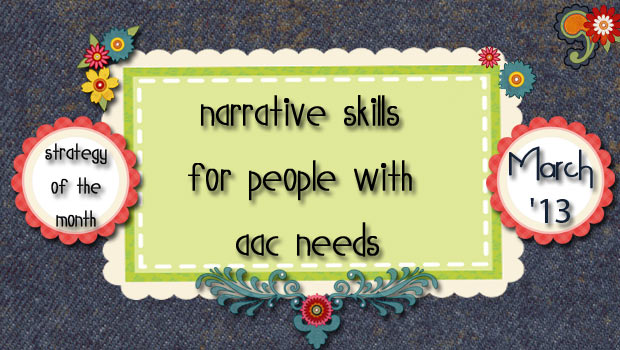
This month, we’ll share some thoughts about helping people with AAC needs develop narrative skills. Why narrative skills? Because they help us connect to one another and communication learning works best when we feel connected. Among other things, storytelling helps us relate to one another. Narrative language is important for reading and writing skills to develop. It helps us understand the world and ourselves. In telling our stories, we establish our identities. Plus, it’s part of what makes life fun. In the US, pediatric therapists are having lots of conversations about the Common Core State Standards (CCSS) in English Language Arts (ELA), and how they relate to the IEP goals of the students that they serve. Many of the goals in the ELA speaking domain require students to be able to summarize what they hear and read, so it is no surprise that SLPs are prioritizing narrative language and related... [Read More...]
February 22, 2013
by Carole Zangari -
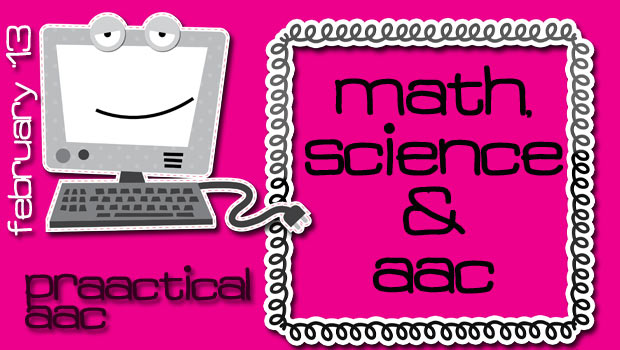
In an earlier post, we began sharing content on AAC and inclusion based on articles from ASHA’s Special Interest Group (SIG) quarterly publication, Perspectives on AAC. Although the final versions are available only to SIG members, clearance has been given to post the original articles. Today, we are pleased to share the work of Michele Boruta and Kara Bidstrup. In this article, they discuss a process for using standards‐based math and science curricula to build the linguistic competence of students who use AAC. In the US, there is an increasing focus on using the curriculum as the launching point for all IEP-driven intervention. Though the mandate for using curricula as the context for therapies is not new, many SLPs are still getting comfortable with this approach. We hope this article provides some prAACtical guidance for therapists who are striving to integrate AAC teaching with curriculum content. Thank you to Ms.... [Read More...]
January 25, 2013
by Carole Zangari -

Many of our prAACtical AAC friends are members of ASHA’s Special Interest Group (SIG) on AAC and are able to access their quarterly publication, Perspectives on AAC. I was fortunate to be invited to submit an article for the September 2012 edition, guest edited by Gail Van Tatenhove, on the topic of including students with robust AAC devices in general education classrooms. Access to the final publication is limited to those who are ASHA SIG members, but Gail did get clearance for authors to be able to share their original unedited works. Several of those authors have given permission for their articles to be published on the Minspeak website and also here on our site. In this post, we would like to share the work of Solana Henneberry, Jennifer Kelso, and Gloria Soto. This article describes a process of developing an AAC intervention plan that relate to the Common Core... [Read More...]
December 24, 2012
by Carole Zangari -
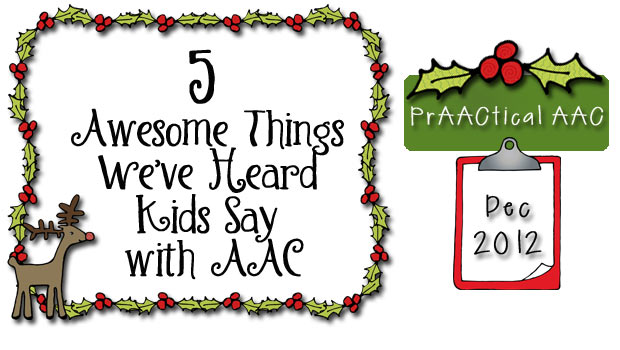
Listen up, friends. Kids are talking with AAC and saying some terrific things. Here are some of our favorites. 1. “Can you scan that, please? It’s on my IEP.” (It’s never too early to learn self-advocacy skills.) 2. “Tell me more.” (We love ‘language magnets!’) 3. “Why [did] you do that to me?” (Hold people accountable. It works.) 4. “No!” (Everyone has the right to express displeasure. Using language rather than behavior to do so gets a big thumbs-up from us.) 5. “You [are] nice.” (Everyone needs a little compliment once in awhile. Folks who know how to give them have an easier time making friends.) How about you? What awesome things have you heard kids say with AAC?
November 23, 2012
by Carole Zangari -
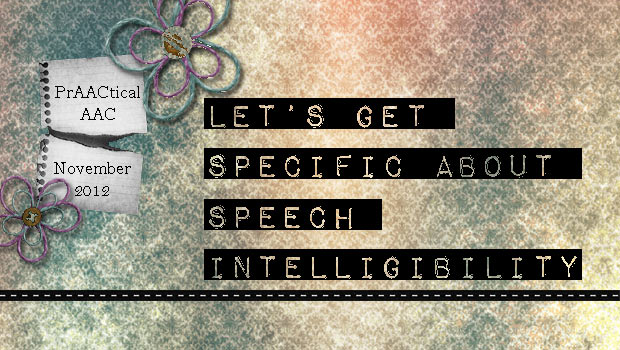
When we’re writing AAC evaluation reports, compiling funding documents, and summarizing the present level of performance in IEPs, we frequently comment on speech intelligibility. In some cases, we’ve administered a standardized assessment instrument and are sharing those results. Often, though, the comments are more descriptive in nature. It is not uncommon to read documentation in which someone with articulation difficulties is described as having speech intelligibility that is mildly, moderately, or severely impaired. Those categories are pretty broad, open to interpretation, and can be quite vague. What do we really mean when saying that someone does or doesn’t have intelligible speech? To narrow down the meaning, we specify the two variables that have the greatest influence on how comprehensible the communicator’s speech output actually is: the context and the communication partner. Specifying whether the context is known and the partner is a familiar one, helps us better interpret the descriptors... [Read More...]
March 14, 2012
by Carole Zangari -
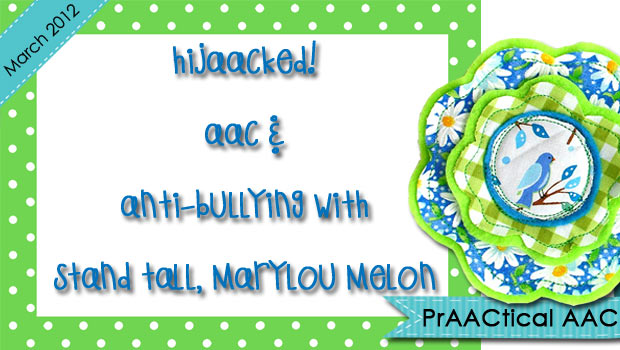
Stand Tall, Mary Lou Melon by Patty Lovell is a fun book that we like reading online* with kids who use AAC. Many schools have anti-bullying campaigns and read this book and others as part of their efforts to help children recognize and respond appropriately to unkind words and deeds. There are a lot of great resources for reading this book on sites like this one intended for use in general education classrooms. We decided it was time to HijAACk Mary Lou and share some ideas for using this wonderful story to build AAC and language skills. – 1. Beginning communicators could certainly contribute to the ‘read aloud’ portion of the activity with repeated lines, like “So she did.” Recording that into a single message device, an SGD, or an AAC app gives our student a terrific way to be actively engaged. 2. Students who can discriminate between two options can... [Read More...]
February 22, 2012
by Carole Zangari -
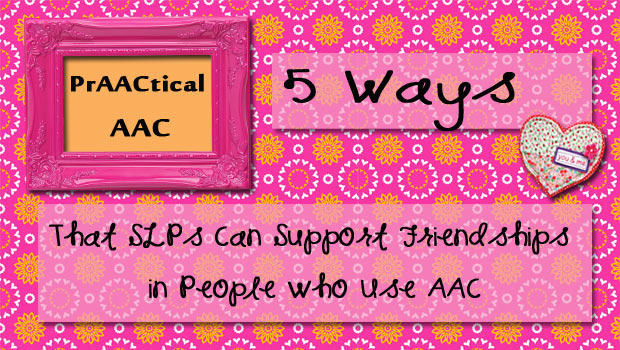
No feeling person could read Louise Kinross‘s post, My Child’s Dream: To Have Friends, without being moved. One of the most basic fervent wishes that all parents have is for their sons and daughters to make and keep friends. Disabled or not, parents fear loneliness for their kids, and rightfully so. Loneliness is a sharp and lasting pain. And, in many cases, completely unnecessary. Kinross’s post, brought to my attention by Ellen Seidman of (Love that Max), inspired me to generate this list of things that we SLP’s can and should be doing to support kids and families. is 1. Make friendship skills a priority: Are there friendship goals in the IEP? There could be. If you’re thinking about working on a social skill, take a step back and see if it makes sense to focus more specifically on communication skills in the context of making and keeping friends. Educationally relevant?... [Read More...]
February 17, 2012
by Carole Zangari -
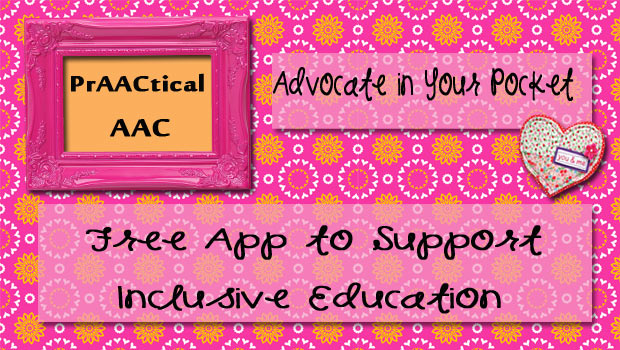
The thought of an IEP meeting fills many parents we know with dread and anxiety, particularly if they are in a district where inclusive education is not running very smoothly. Jillian, a very passionate and competent mom of a youngster who uses high tech AAC, was pretty blunt about it. “I’d rather have root canal,” she said, and the parents within earshot gave her a round of applause. — So when we came across an app that provides support to families in this process, we had to check it. Developed at the Syracuse University School of Education, iAdvocate is an app designed to share information that parents can use to support their request for inclusive education. It lists some of the common roadblocks that families sometimes encounter, such as: “Your child needs small group instruction with few distractions and that can only be provided in a separate classroom.” “Meeting your chid’s needs is... [Read More...]
February 4, 2012
by Carole Zangari -
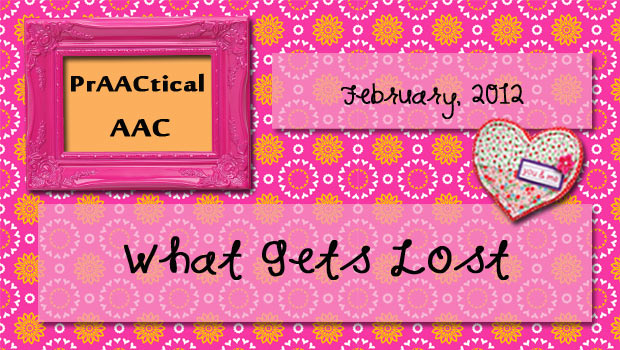
Imagine having one key communication strategy and no one knew that it existed. This horrifying experience was documented in the book ‘I Raise My Eyes to Say Yes,’ the autobiography of Ruth Sienkiewicz-Mercer. For years, she effectively used eye gaze with her family to answer yes/no questions, but when Ruth was placed at a residential facility, things eventually changed. Staff turnover, something we’re all familiar with, was the culprit. With time, new staff came in and didn’t realize that Ruth communicated with her eyes. Ruth was silenced for years until someone noticed that her ‘eyes up’ movement wasn’t reflexive or random. She was talking, but no one was listening. — While this was an extreme example, most AAC practitioners can recount their own stories of people whose AAC messages weren’t effectively translated once they moved to new settings. The transition to a new environment, where untrained partners may fail to recognize... [Read More...]









